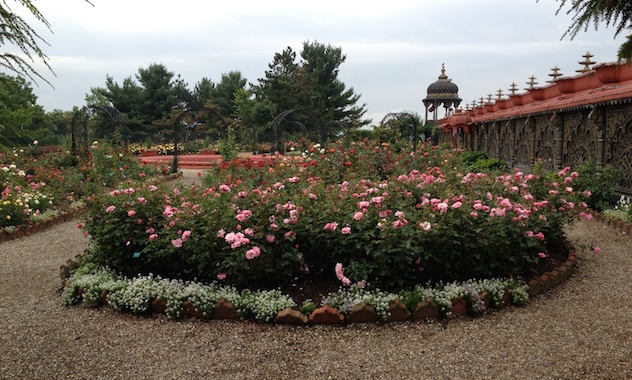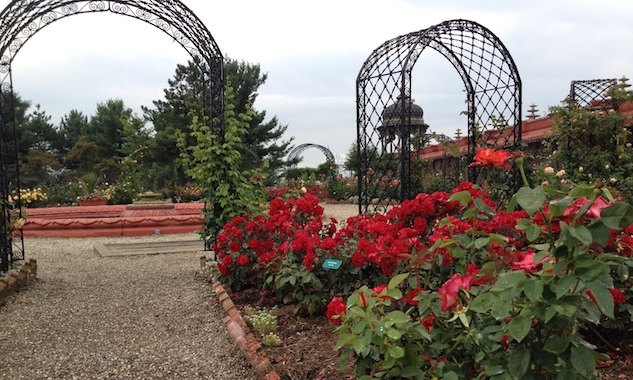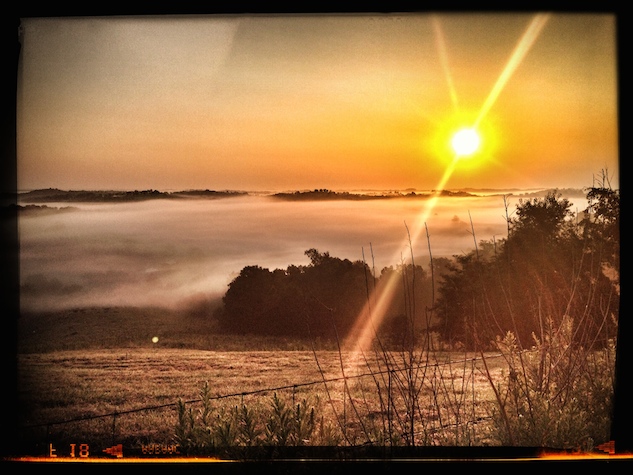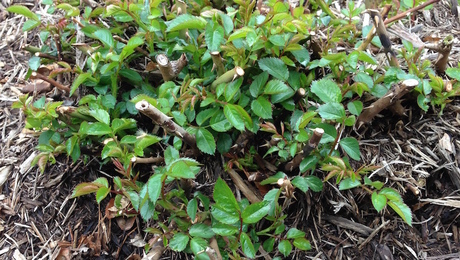
Photo/Illustration: Paul Zimmerman Roses
As I mentioned in that post, this garden is a public garden with the pressure of visitors on regular basis. Particularly during the spring. Because of this the garden needs to look good to meet those visitors expectations. Based on that idea here is what I implemented earlier this year.
First and foremost was a good feeding program.
For the soil.
That’s right, for the soil. This garden has been here for thirty plus years and is heavily planted. They mulched every year and while that helps the soil it’s not same as a good round of compost and then mulch. This is part of my two layered mulch approach and I talk more about that in a past post you can reach via the link below. We started with a good thick layer of compost and covered that with a good thick layer of mulch. Besides feeding the soil, this also cuts down on weeds, which has been a problem in the past.
I also put in place a ratings system by where each rose variety is being scored on a regular basis. It’s a simple one and can be done quickly. We plan to do this several times over this first season. The goal of this is to identify which varieties can handle being treated sustainably and which ones cannot. As much as we’d like to believe they all can I know that simply isn’t the truth. Some roses cannot be grown this way as it’s just not in their DNA.
The reason we do this over a season is to give us an objective scoring system based on a full season and not on how they look on one particular day. It would be easier to simply go into the garden on one day and make snap decisions but I feel that isn’t fair to the roses. It’s only over a season do they reveal if they can handle this. Those that cannot will be replaced.

Photo/Illustration: Paul Zimmerman Roses
The results surprised even me. So far this year they have only sprayed four times instead of weekly. That’s a reduction of about 75%! Plus, the garden still looks good. The roses are putting on new growth, blooming in the middle of summer and show little leaf drop. This tells me the soil feeding program is working.
I’ll continue to share observations on the garden in posts to come, but I wanted to focus on the immediate impact our soil feeding program is having. While we did our two layered mulching in spring it’s never too late, or a bad time, to do your own. If you are thinking of going more sustainable this is the important first step.
Oh yes, they’ve cut back on weeding by about 80% as well. Talk about bang for your buck!
Happy Roseing
Paul

Photo/Illustration: Paul Zimmerman Roses





















Comments
Log in or create an account to post a comment.
Sign up Log in